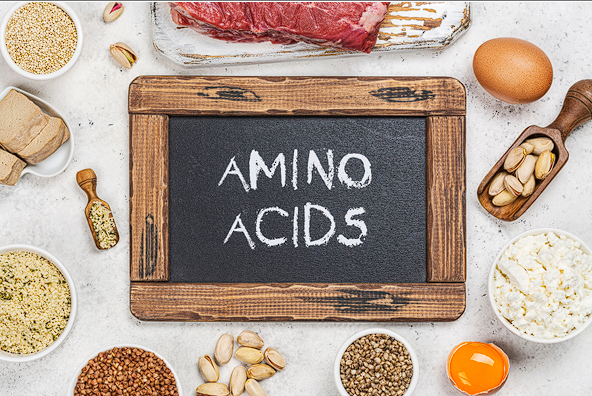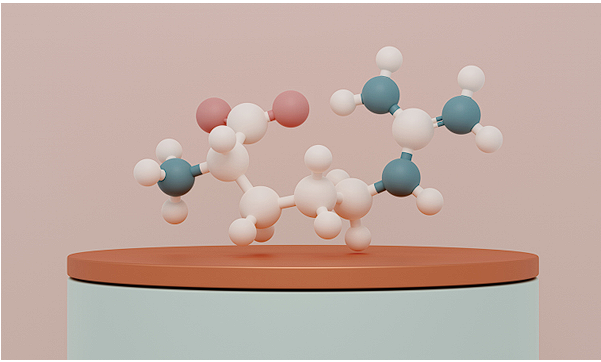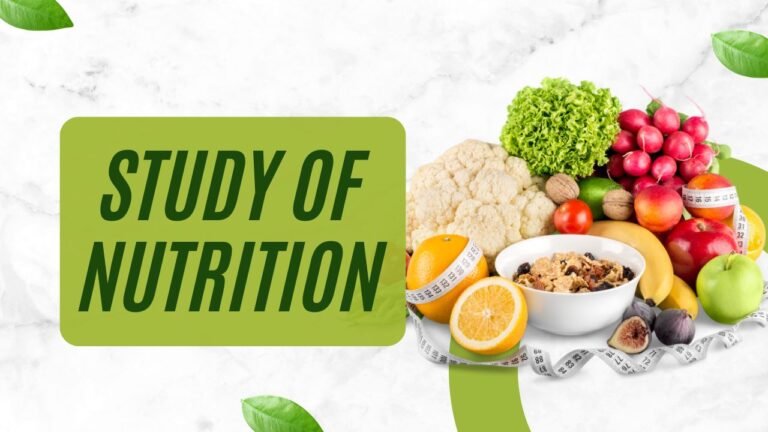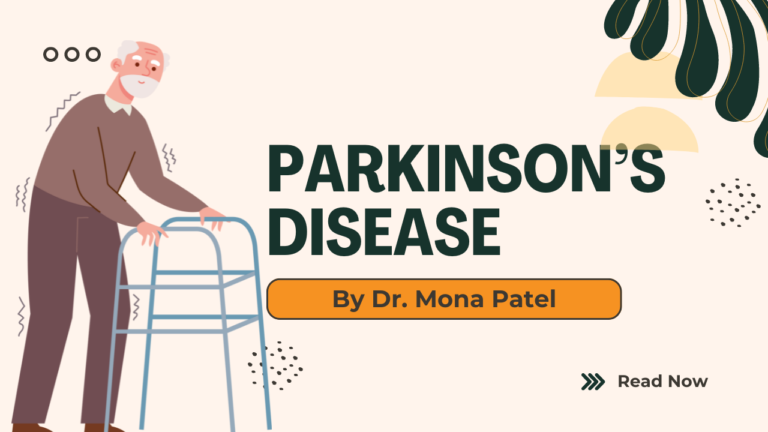AMAZING POWER OF AMINO ACIDS BY DR.AKANSHA SINGH
Introduction to Amino Acids

Amino acids are fundamental organic compounds that play a crucial role in the structure and function of proteins. Often referred to as the building blocks of proteins, they are essential for various bodily functions, including tissue repair, enzyme activity, and hormone production. Each amino acid has a unique structure that includes an amino group, a carboxyl group, and a variable side chain, which together determine its specific properties and functions. While over 500 amino acids have been identified, only 20 are essential for human health, each contributing uniquely to our overall well-being. Understanding amino acids helps us appreciate their vital role in maintaining and enhancing our health.
Definition:
Amino acids are organic compounds that consist of an amino group and a carboxyl group. Organic compounds are characterized by having a carbon chain in their structure. Thus, amino acids are organic compounds with a carbon chain structure that includes both an amino group (NH₂) and a carboxyl group (COOH).
Role in Proteins:
Amino acids are the building blocks of proteins. Just as various tissues and cells make up our body, amino acids form proteins, which are the fundamental structures and functional units of our body. When proteins are broken down, they yield amino acids. In essence, proteins are complex molecules made up of sequences of amino acids. The variety in protein types arises from different sequences of these amino acids.
Structure of Amino Acids

The general structure of an amino acid includes:
- Amino Group (NH₂): A functional group that contains nitrogen.
- Carboxyl Group (COOH): A functional group that contains carbon and oxygen.
- Side Chain (R Group): This is the variable part of the amino acid that differs among various amino acids. The R group defines the specific identity of the amino acid.
The general structural formula of an amino acid includes an R group attached to a central carbon atom, which is also bonded to an amino group and a carboxyl group. The R group can vary, which is why different amino acids have different properties.
Major Elements of Amino Acids:
Amino acids primarily consist of four elements:
- Carbon
- Hydrogen
- Nitrogen
- Oxygen
Although around 500 to 600 amino acids are known, only 20 are significant in proteins, each playing a unique role in bodily functions.
Classification of Amino Acids:
Amino acids can be classified in various ways:
- By R Group: Based on the nature of the R group, which can be nonpolar, polar, acidic, or basic.
- By Polarity: Amino acids can be categorized based on the polarity of their side chains.
- By Distribution in Proteins: How amino acids are distributed in proteins and their specific roles.
- By Nutritional Requirement: Essential and non-essential amino acids are classified based on their necessity for the human diet.
- By Carboxyl Group: Classification based on the number of carboxyl groups present.
Understanding the power and versatility of amino acids is crucial as they are fundamental to many biological processes and health functions.
Amino Acid Classification Based on Nutritional Requirement

Among the various classifications of amino acids, the most crucial is based on nutritional requirements. This classification divides amino acids into three main categories:
- Essential Amino Acids: Essential amino acids are those that the human body cannot synthesize on its own or cannot produce in sufficient amounts. Therefore, these amino acids must be obtained through the diet. Essential amino acids are critical for various bodily functions, including growth and maintenance. Our body has a limited ability to convert one amino acid into another, so we must rely on dietary sources to meet our needs. The nine essential amino acids are:
- Phenylalanine
- Valine
- Threonine
- Tryptophan
- Isoleucine
- Methionine
- Histidine
- Lysine
- Leucine
To remember these essential amino acids, you can use the mnemonic: PVT TIM HaLL, where each letter represents an essential amino acid.
- Non-Essential Amino Acids: Non-essential amino acids are those that the body can synthesize on its own. They are not required in the diet because the body can produce them in sufficient quantities, provided there is adequate nitrogen available. Examples of non-essential amino acids include:
- Alanine
- Arginine
- Asparagine
- Aspartic Acid
- Cysteine
- Glutamic Acid
- Glutamine
- Glycine
- Proline
- Serine
- Tyrosine
- Conditionally Essential Amino Acids: These are amino acids that are normally non-essential but become essential under certain conditions. For instance, during periods of extreme stress, illness, or in newborns, the body may not produce these amino acids in adequate amounts, making them essential in those specific circumstances. Examples include:
- Arginine
- Cysteine
- Glycine
- Proline
- Tyrosine
Key Points:
- Essential Amino Acids: Must be acquired from dietary sources as the body cannot produce them.
- Non-Essential Amino Acids: Produced by the body from other nutrients, not required in the diet.
- Conditionally Essential Amino Acids: Become essential under stress or specific conditions when the body’s synthesis capacity is compromised.
Understanding Essential Amino Acids

Amino acids are crucial for our body’s functioning, and among them, phenylalanine, valine, and threonine play significant roles. Let’s delve into these essential amino acids, their functions, and their impacts on health.
Phenylalanine: The Essential Building Block
Phenylalanine is the first essential amino acid, meaning our body cannot produce it, so we must obtain it from our diet. Phenylalanine is converted into tyrosine, a non-essential amino acid, in the body. Tyrosine is then used to produce important neurotransmitters: dopamine, epinephrine, and norepinephrine.
Role in Neurotransmitter Production:
- Dopamine: This neurotransmitter is associated with pleasure and motivation. It is released when we experience something pleasurable or achieve a task. High dopamine levels can enhance motivation and energy levels, while low levels can lead to lethargy and lack of motivation.
- Epinephrine and Norepinephrine: Known as adrenaline and noradrenaline, these are crucial for the “fight or flight” response. They help the body focus, stay alert, and manage stress by constricting blood vessels and increasing oxygen to the brain.
Dietary Sources of Phenylalanine: Phenylalanine is found in various foods, including:
- Lentils
- Chickpeas
- Soybeans
- Whole grains
- Sesame seeds
- Pumpkin seeds
- Peanuts
- Nuts
- Lima beans
- Dairy products (cheese, cottage cheese)
Health Benefits and Supplementation:
Phenylalanine supplementation can be beneficial in cases of chronic pain and depression, as it helps in the production of dopamine. It’s also involved in the formation of other neurotransmitters and hormones like melanin and thyroxine.
Additional Uses:
Phenylalanine supplements may help improve motivation, concentration, mood, and reduce anxiety. They can also assist with muscle fatigue and certain skin conditions like vitiligo.
Valine: The Branched-Chain Amino Acid
Valine is one of the three branched-chain amino acids (BCAAs) and plays a vital role in muscle health.
Functions of Valine:
- Muscle Growth and Regeneration: Valine stimulates muscle growth and aids in muscle repair and regeneration.
- Energy Production: It supports energy production, making it essential for those engaged in physical training.
Supplementation:
Valine supplements are often recommended for muscle health and can be found in various forms, tailored to support muscle growth and repair.
Threonine: Essential for Immunity and Protein Structure
Threonine is an essential amino acid that is crucial for maintaining the body’s protein structures.
Functions of Threonine:
- Protein Structure: It is a principal component of proteins like collagen and elastin, which are vital for skin elasticity and repair.
- Immunity: Threonine supports mucus membranes that protect against infections.
Deficiency Concerns:
A deficiency in threonine can lead to reduced skin elasticity, increased aging signs, and a higher risk of infections. It also plays a role in preventing protein-energy malnutrition, particularly in children.
Supplementation:
Threonine supplements can aid in maintaining healthy liver function and support normal wound healing.
Tryptophan: The Sleep and Mood Regulator
Tryptophan is an essential amino acid known for its role in producing serotonin, a neurotransmitter that regulates appetite, sleep, and mood.
Functions:
- Serotonin Production: Tryptophan is converted into serotonin in the body. Serotonin influences sleep patterns, appetite control, and mood stabilization.
- Impact of Deficiency: A lack of tryptophan can lead to reduced serotonin levels, resulting in disrupted sleep, mood swings, and potential difficulty in managing appetite.
Sources: Tryptophan is found in foods such as turkey, chicken, nuts, seeds, and dairy products.
Methionine: The Detoxifier and Growth Supporter
Methionine is an essential amino acid that plays a key role in metabolism and detoxification.
Functions:
- Metabolism and Detoxification: Methionine aids in metabolic processes and helps the body detoxify.
- Tissue Growth: It is necessary for tissue growth, including muscle development.
- Mineral Absorption: Methionine facilitates the absorption of zinc and selenium, minerals crucial for overall health.
Sources: Good sources of methionine include eggs, nuts, seeds, and meats.
Leucine: The Protein Synthesizer
Leucine is one of the three branched-chain amino acids (BCAAs), essential for muscle health.
Functions:
- Protein Synthesis: Leucine is critical for the synthesis and repair of proteins, particularly in muscle tissue.
- Blood Sugar Regulation: It helps maintain stable blood sugar levels.
- Wound Healing and Growth Hormone Production: Leucine stimulates wound healing and promotes the production of growth hormones.
Sources: Leucine is abundant in animal proteins like beef, chicken, and fish, as well as in plant-based sources like soybeans.
Isoleucine: The Energy Regulator
Isoleucine, another BCAA, plays an essential role in muscle metabolism and energy regulation.
Functions:
- Muscle Metabolism: Isoleucine is heavily concentrated in muscle tissue and supports muscle metabolism.
- Immune Function: It is important for immune system health.
- Hemoglobin Production: Isoleucine aids in the production of hemoglobin, which carries oxygen in the blood.
- Energy Regulation: It helps in regulating energy levels.
Sources: Isoleucine is found in foods such as meat, dairy, eggs, and legumes.
Lysine: The Protein and Calcium Partner
Lysine is crucial for protein synthesis, calcium absorption, and overall health.
Functions:
- Protein Synthesis: Lysine plays a major role in synthesizing proteins.
- Calcium Absorption: It helps in the absorption of calcium, essential for bone health.
- Hormone and Enzyme Production: Lysine supports the production of hormones and enzymes.
- Collagen and Elastin Production: It is important for the production of collagen and elastin, vital for skin, nails, and hair health.
Sources: Lysine is present in high amounts in red meat, poultry, fish, dairy products, and legumes.
Histidine: The Neurotransmitter Producer
Histidine is an essential amino acid that helps produce histamine, a neurotransmitter involved in several critical functions.
Functions:
- Histamine Production: Histamine plays a key role in immune responses, digestion, sexual function, and sleep-wake cycles.
- Myelin Sheath Maintenance: Histidine is vital for maintaining the myelin sheath, which protects nerve cells.
Sources: Histidine can be found in foods such as meat, poultry, fish, and dairy products.
Essential Amino Acids and Their Food Sources:
Essential amino acids are critical for various bodily functions, and they need to be obtained from our diet since the body cannot produce them. They are found in different foods, and understanding their sources helps ensure we get all necessary nutrients.
Complete Proteins vs. Incomplete Proteins
- Complete Proteins: These contain all nine essential amino acids in sufficient quantities. Sources include:
- Animal-Based: Meat, seafood, poultry, eggs, and dairy products.
- Plant-Based: Soybeans and quinoa.
- Incomplete Proteins: These lack one or more essential amino acids. Examples include:
- Cereals: Wheat, rice, maize (often low in lysine but high in methionine).
- Pulses: Urad, masoor, arhar, moong, chana, soybean (often low in methionine but high in lysine).
Categorizing Protein Sources
- Rich Sources:
- Animal-Based: Eggs, milk, meat, fish, skimmed milk.
- Plant-Based: Soybean, nuts, and oilseeds.
- Moderate Sources:
- Cereals: Wheat, rice, and maize.
- Millets: Jowar, bajra, ragi.
- Legumes: Pulses like urad, masoor, arhar, moong, chana.
- Fair Sources:
- Vegetables: Green leafy vegetables, potatoes, banana.
- Fruits: Banana and coconut.
Combining Plant Proteins:
Plant-based proteins often lack one or more essential amino acids. Combining different plant foods can provide a complete amino acid profile:
- Cereals and Pulses: For example, rice (high in methionine but low in lysine) combined with dal (high in lysine but low in methionine) forms a complete protein.
- Traditional Indian Diets: Dosa (rice and urad dal) and dal roti (lentils and wheat) are examples of combining foods to enhance protein quality.
Recommended Daily Allowances (RDA) for Essential Amino Acids:
The RDA for essential amino acids varies based on individual needs. Here’s a general guideline for daily requirements:
- Histidine: 10 mg
- Isoleucine: 20 mg
- Leucine: 39 mg
- Lysine: 30 mg
- Methionine: 10.4 mg
- Phenylalanine (combined with tyrosine): 25 mg
- Threonine: 15 mg
- Tryptophan: 4 mg
- Valine: 26 mg
Understanding Non-Essential Amino Acids

Definition:
Non-essential amino acids are those that the body can synthesize on its own. Even though these amino acids do not need to be obtained directly from the diet, they are vital for maintaining health and supporting various bodily functions.
Key Non-Essential Amino Acids:
- Alanine
- Functions:
- Assists in metabolism.
- Helps remove toxins from the body.
- Regulates blood sugar and cholesterol levels.
- Provides energy to muscles and the central nervous system.
- Immunity Role: Supports lymphocyte production, which is crucial for the immune response.
- Functions:
- Arginine
- Functions:
- Boosts nitric oxide production, aiding in blood pressure regulation and blood flow.
- Relaxes blood vessels.
- Assists in wound healing and detoxifying the kidneys.
- Maintains hormonal balance.
- Health Impact: Can lower blood pressure and help with erectile dysfunction.
- Functions:
- Asparagine
- Functions:
- Supports brain cell health and the central nervous system.
- Contributes to the production of other amino acids.
- Forms part of glycoproteins that support cell and connective tissue structure.
- Functions:
- Aspartic Acid
- Functions:
- Aids digestion by generating mucus in the gastrointestinal tract.
- Helps protect against infections and supports digestive processes.
- Functions:
- Cysteine
- Functions:
- Stimulates collagen production, essential for skin and hair health.
- Produces the antioxidant glutathione, which supports detoxification.
- Health Impact: Enhances skin glow and growth, and supports detoxification.
- Functions:
- Glutamine
- Functions:
- Provides energy for the brain.
- Regulates ammonia levels.
- Supports digestion, immunity, and overall brain function.
- Functions:
- Glycine
- Functions:
- Important for immunity, wound healing, vision, hearing, and movement.
- Functions:
- Proline
- Functions:
- Essential for tissue repair and skin regeneration.
- Functions:
- Serine
- Functions:
- Important for muscle metabolism, fat burning, immune health, and mood regulation.
- Functions:
- Tyrosine
- Functions:
- Helps manage hypertension, depression, and chronic pain.
- Health Impact: Used in supplements for mood and pain management.
- Functions:
Summary of Roles:
- Metabolism and Detoxification: Alanine and Arginine play significant roles in metabolism and liver detoxification.
- Blood Pressure and Circulation: Arginine helps regulate blood pressure and improves blood flow.
- Brain and Nervous System Health: Asparagine and Glutamine are crucial for brain function and central nervous system health.
- Digestive Health: Aspartic Acid supports digestion and protects the gastrointestinal tract.
- Skin and Hair Health: Cysteine is vital for collagen production and antioxidant activity.
Food Sources
Non-essential amino acids can be synthesized by the body, but they are also found in various foods:
- Animal Sources: Meat, eggs, dairy products, and fish.
- Plant Sources: Legumes (e.g., soybeans), nuts, and whole grains.
Detailed Insights on Specific Amino Acids
- Aspartic Acid:
- Plays a role in synthesizing essential amino acids like methionine, threonine, isoleucine, and lysine.
- Aids in energy production and participates in the urea cycle.
- Cysteine:
- A key component in collagen production.
- Influences antioxidant glutathione formation, which helps neutralize free radicals and supports detoxification.
- Glutamic Acid:
- Functions as an excitatory neurotransmitter and regulates ammonia levels in the brain and body.
- Glutamine:
- Acts as a precursor for glutathione and is crucial for digestion, brain function, and immune health.
- Becomes conditionally essential during stressful conditions.
- Glycine:
- The smallest amino acid, it plays a role in collagen production and energy supply.
- Contributes to proper cell growth, function, and digestive health.
- Proline:
- A major component of collagen, essential for tissue repair and skin regeneration.
- Helps prevent arteriosclerosis and regulates blood pressure.
- Serine:
- A precursor for tryptophan, which produces serotonin.
- Important for cognitive functions, muscle formation, immune health, and fat metabolism.
- Tyrosine:
- Derived from phenylalanine and important for neurotransmitter production.
- Plays a role in protein synthesis, thyroid hormones, and managing conditions like stress and depression.







